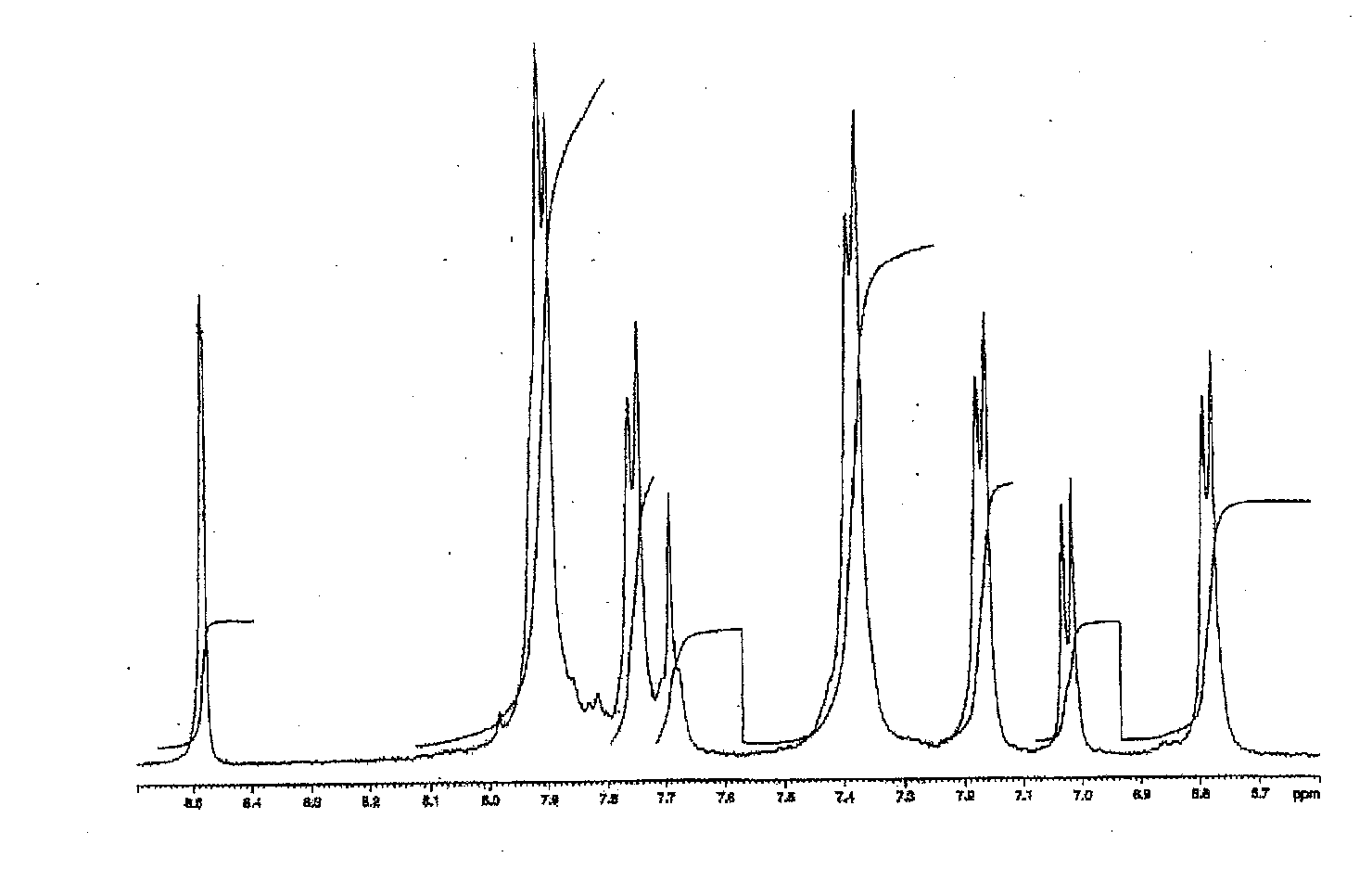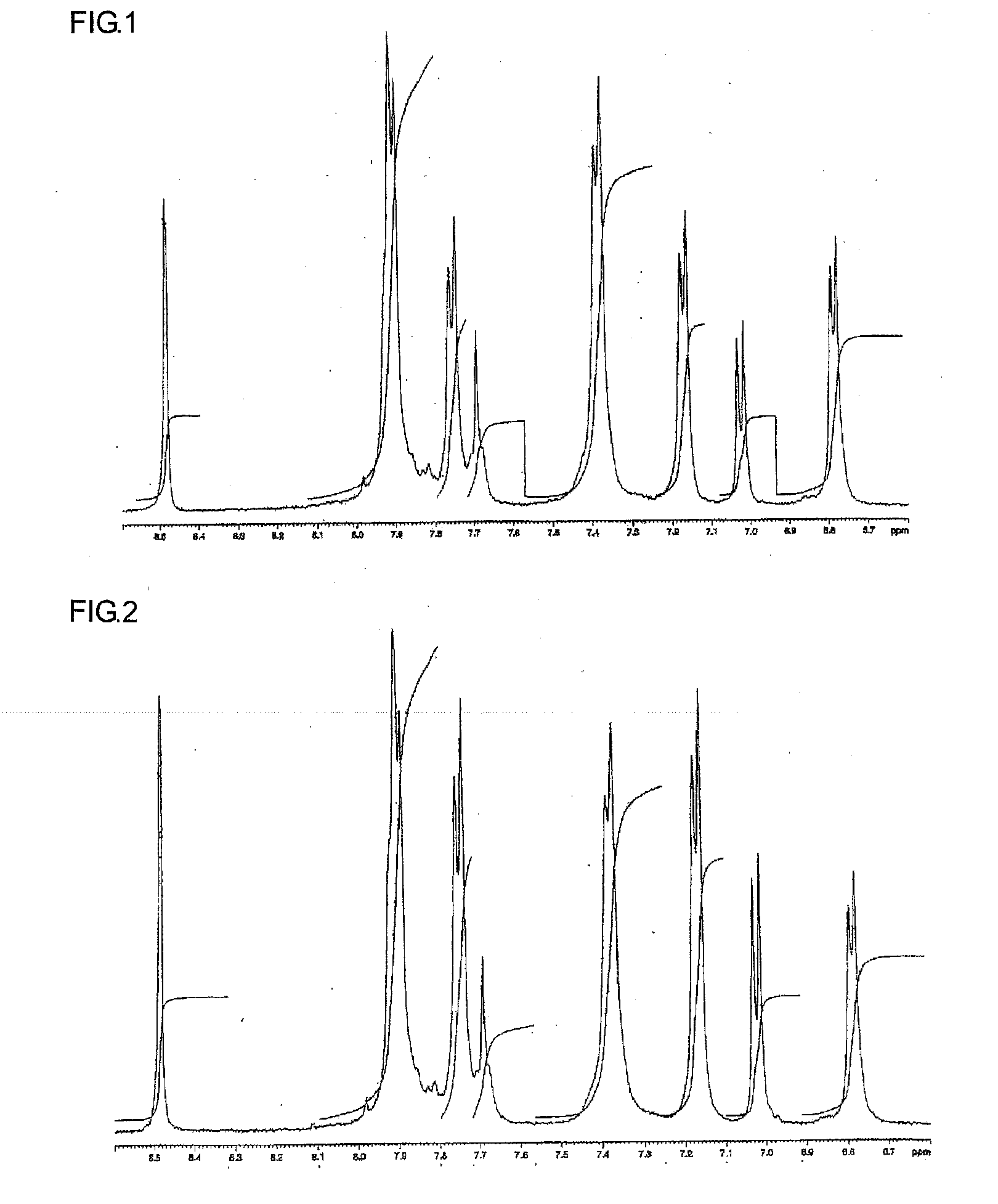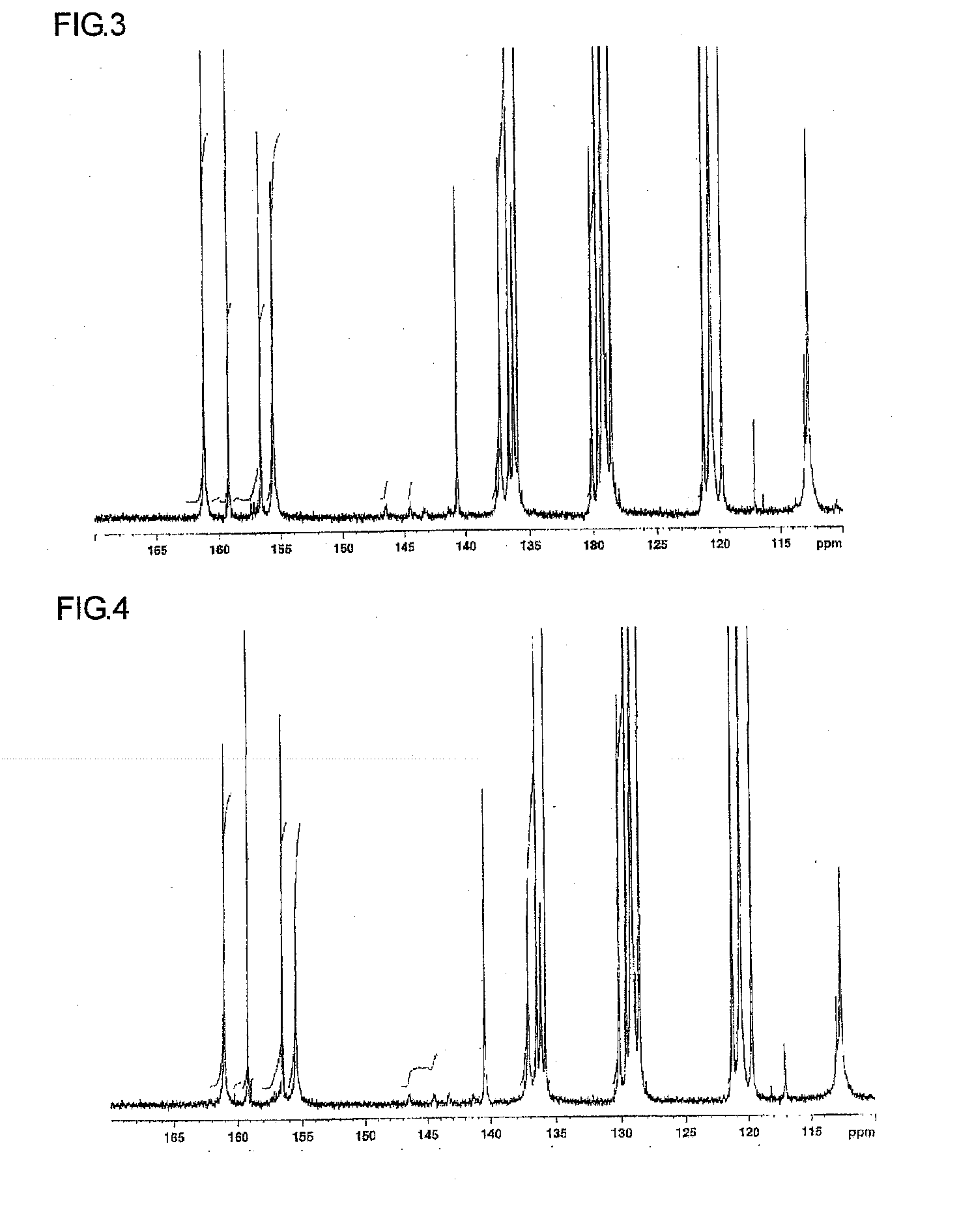Novel Sulfonic-Acid-Group-Containing Segmented Block Copolymer, Application Thereof, and Method of Manufacturing Novel Block Copolymer
a technology of sulfonic acid group and copolymer, which is applied in the direction of sustainable manufacturing/processing, final product manufacturing, conductors, etc., can solve the problems of uneven sulfonation, difficulty in controlling the sulfonation reaction caused by a sulfonation agent, and high or low degree of sulfonation, and achieve excellent methanol inhibition properties
- Summary
- Abstract
- Description
- Claims
- Application Information
AI Technical Summary
Benefits of technology
Problems solved by technology
Method used
Image
Examples
synthesis example 1
Hydrophobic Oligomer A
[0165]Here, 49.97 g (290.5 mmol) 2,6-dichlorobenzonitrile (abbreviated as DCBN), 54.99 g (295.3 mmol) 4,4′-biphenol (abbreviated as BP), 46.94 g (339.6 mmol) potassium carbonate, 750 mL NMP, and 150 mL toluene were placed in a 1000 mL side arm flask to which a nitrogen introduction pipe, an agitation blade, a Dean-Stark trap, and a thermometer were attached, and they were heated in a nitrogen current while being stirred in an oil bath. Dehydration by azeotrope with toluene was carried out at 140° C. and thereafter toluene was wholly distilled out. Thereafter, a temperature was raised to 200° C. and heating for 15 hours was performed. In another 1000 mL side arm flask to which a nitrogen introduction pipe, an agitation blade, a reflux condenser, and a thermometer were attached, 200 mL NMP and 4.85 g perfluoro biphenyl were placed and heated to 110° C. in an oil bath in a nitrogen current while being stirred. A reaction solution of DCBN and BP was supplied theret...
synthesis example 2
Hydrophobic Oligomer B
[0166]Here, 49.97 g (290.5 mmol) DCBN, 54.99 g (295.3 mmol) BP, 46.94 g (339.6 mmol) potassium carbonate, 770 mL NMP, and 130 mL toluene were placed in a 1000 mL side arm flask to which a nitrogen introduction pipe, an agitation blade, a Dean-Stark trap, and a thermometer were attached, and they were heated in a nitrogen current while being stirred in an oil bath. Dehydration by azeotrope with toluene was carried out at 140° C. and thereafter toluene was wholly distilled out. Thereafter, a temperature was raised to 200° C. and heating for 15 hours was performed. In another 1000 mL side arm flask to which a nitrogen introduction pipe, an agitation blade, a reflux condenser, and a thermometer were attached, 200 mL NMP and 8.09 g perfluoro biphenyl were placed and heated to 110° C. in an oil bath in a nitrogen current while being stirred. A reaction solution of DCBN and BP was supplied thereto by using a dropping funnel for 2 hours while stirring. After supply was...
synthesis example 3
Hydrophobic Oligomer C
[0167]A hydrophobic oligomer C was synthesized as in Synthesis Example 1, except for using 5.78 g perfluoro diphenyl sulfone instead of 4.85 g perfluoro biphenyl. The number-average molecular weight determined in 1H-NMR measurement was 14010. A chemical structure of hydrophobic oligomer C is shown below.
PUM
| Property | Measurement | Unit |
|---|---|---|
| Temperature | aaaaa | aaaaa |
| Temperature | aaaaa | aaaaa |
| Percent by mass | aaaaa | aaaaa |
Abstract
Description
Claims
Application Information
 Login to View More
Login to View More - R&D
- Intellectual Property
- Life Sciences
- Materials
- Tech Scout
- Unparalleled Data Quality
- Higher Quality Content
- 60% Fewer Hallucinations
Browse by: Latest US Patents, China's latest patents, Technical Efficacy Thesaurus, Application Domain, Technology Topic, Popular Technical Reports.
© 2025 PatSnap. All rights reserved.Legal|Privacy policy|Modern Slavery Act Transparency Statement|Sitemap|About US| Contact US: help@patsnap.com



